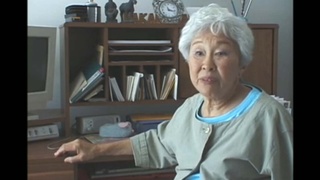Interviews
Suffering in World War II (Spanish)
(Spanish) So much suffering, so much bad blood, hunger, everything bad that could be found in humanity [took place then]. I believe that it was very positive, [however]; the knowledge of that suffering [can be shared with] the youth [of today] who do not have [such] problems [and they can learn from the past]. In order to eat we had problems at that time in Nihon (Japan). The rationing of rice was common. In place of rice, they gave you biscuits (bizcocho, bizcochuelo), or more or less they gave you poroto…or also they could give you sweet potatoes instead of [regular] potatoes. With that you had to maintain yourself; you did not have salt, no sugar. Do you know how we salted foods, to make foods salty? We went to the beach in search of sea water…in nihongo one says oke, which is a wooden pot that we carried on our shoulders and brought salt water in order to obtain salt. Forget about sugar during that time. Every person who lived during that time is better off because they know what suffering is all about. And most are my age or even older, and there are many who have died. Thus, from that time period it was so variable, so variable, but also, I say, from one province to the next, there was much variation […] there were cities that were not bombed out, [although] the majority were bombed […] the provinces that were not bombed out…were very lucky.
Date: September 18, 2006
Location: Buenos Aires, Argentina
Interviewer: Takeshi Nishimura, Ricardo Hokama
Contributed by: Centro Nikkei Argentino










